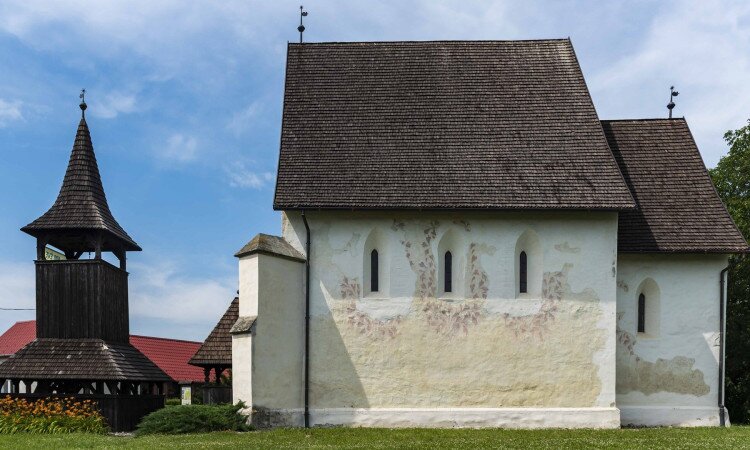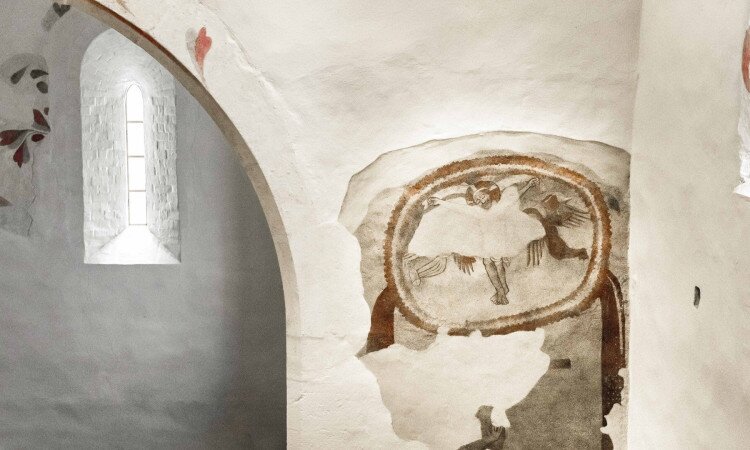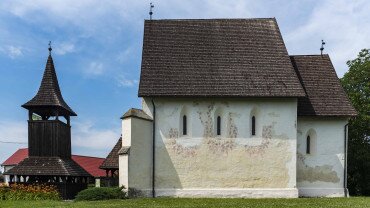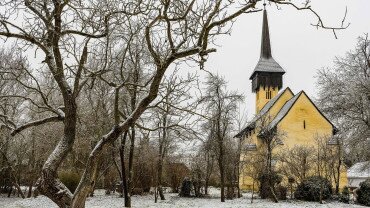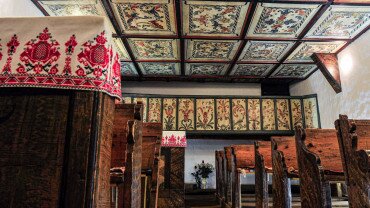Márokpapi village in Szabolcs-Szatmár-Bereg county, Vásárosnamény district.
River and the road passing north along it reached the swampy place called Micz stream, the land of Pázmán (aka Pázmán rekettye); then between Márok and Surány the committee came to Holmitcz, otherwise to Hemp, and on the way from Surány to Tarpa, where he was a mower named Bede Antal Rekez; from here he reached the border road, Nyáras, Biskehárszeg, a square called Egerchye, where in a forest was the border of Surány and Márok; then to Tamáspataká, beyond the Kisliget stream, at the Zypa river, it completed the border line. ” In 1548, János Surányi launched an investigation into the noble Pál Kisok, Márton, Albert, András, Demjén, Ferenc and András, János Fóris, Pál Olasz, István, Miklós and Gáspár, Pál Dancs and Ferenc ,, Máté Kantor, Albert Bernold Against Tamás, Pál and Lőrinc, who had committed violence in one of the complainant's serfs in the woods of the priest; and against Dersi Ambrus, Stephen, and Benedict, who arrested another serf. In 1556, the two settlements were destroyed by the migrating Tartars.
In 1606, by the decree of Prince István Bocskai, he introduced Pál Nyári, the internal councilor of the Leszsi Convention, to the following places: Kisvárda, Ajak, Tas, Devecser, Pátroh, Döge, Vörösmart, Litke, Pap, Rozsály, Tuzsér, Kalonya, Rék, Szamosszeg, Jánk, Hermaszeg, Gőg, and Márok. It was mentioned in 1647 as Péter Melith, István Pető, György Melith, György Becski and Zsigmond Nyári, and in Papi: István Telegdi, widow of Menyhért Lónyay, Gábor Perneszi, Ádám Dessewffy and László, Zsigmond Újfalusi. Márton Vass, Pál Fuló, Péter Melith and Zsigmond Perényi.
At the beginning of the river century, the families Baz, Bessenyei, Neupauer and Vitkay, whose descendants still live, and the Uray family also owned here, namely Baron Gyula Uray, Gábor Lónyay, István Horváth, József Sinka, János Vár and Károly, Tamás Szalay and Sándor Mrs. Lajos Váczy, György Miter, István Fazekas, János Badák. The names of the other landowners are Balog, Bodoki, Ecsedi, Antal, Fábián, Jakab, Kis, Kocsis, Murza, Mester, Miglécsi, Nábrádi, Nagy, Széki and Veres, etc.
In 1796, György Besenyei, the then second deputy of the county, settled the lake in Márokpapi, which had been depopulated by the fighting and disasters, and whose descendants had since become completely Hungarian. The inhabitants of Tiszahát and Tóhát, which stretched out in this region, accepted the new faith at the time of the development of Protestantism, and the Reformed Reformed occupied the local r. k. church. Its walls were once piled up inside with paintings and Gothic inscriptions, but in 1775 they were plastered and later whitewashed without being written down. As Márok was separated from Papi only a step away, until 1645 it was Mária's daughter's church, but when it merged, it became a mother church. A synod was held here by the priests of Beregvidék, namely on March 17, 1678, which is reminiscent of the fact that this time Bishop Mátyás Nógrád forbade the priests from smoking and smoking. The ref. According to public opinion, the area of Paplak was donated by the head of the Maróti family in 1668, on which a new house was built at that time, as well as in 1758.
Roman Catholics wandered without a pastor for a long time, until in 1836 a priesthood was formed again in Márok. In the last century, the Csáky family had a pretty and spacious stone barn in Márok, the traces of which can still be seen today.It was formed as a merger of two villages (Márok and Márokpapi) in 1941. [3]
There are two Hungarian lakes near the Csaroda River in the Tiszahát district, close to each other, with a border of 1,862 acres, with 117 houses and 498 inhabitants in Márok and 100 houses and 419 souls in Papi.The border of Márok was passed from Surány as early as 1280 and again in 1299, according to which it was established later, in 1422, when Mihály Várdai, Miklós and Pelbárt on the one hand and Zsigmond Surányi on the other part due to the borders. , then Papi is already mentioned as an adjoining room. Around 1299 they are mentioned as border points between Papi and Fejércse: Somospatak, Zypa river, András dam (clausura), Mommultov hill, Mich water, Pázmánreketye, Holuth (dead) Mich, Kismezeőd and Hulmuth. It should be noted that the region of Márok was donated by our first kings to the Gut-Keled family, from which he later passed on to his descendants, the Oradea, already in 1299 forming separate families of Aladár, Miklós and Gábor.
Between 1341 and 1346, János Kisvárdai's son, János, appeared in Márok's possession in a border fencing lawsuit, while János Surányt, the son of Tamás, was the neighbor; In 1346, in order to settle the case, the priest Jakab Káptalanbeli from Oradea and the deaf Lukács and Tamás deák appeared, but János Surányi was absent, and the court was unsuccessful.
In 1347, at the county assembly held in Ardon on Wednesday before Pentecost, János Várdai complained to the chief of Marochuk Bereg and his four servants that Pouka's sons, Péter and János, Tamás's son, Domobs Dobos, Miklós Kondor, István Éltes, Barna's son and when the serf's house was forcibly rushed, the serf was carried away.
In the locality of Márok already in the XIII. century, there was a priesthood and a holy church erected in honor of Anna; in the register of papal tithes of 1333 it is mentioned that his priest paid five garages to the pope every year; the neighboring priestly place took this name from the priests of Tarpa, who, at the time when the Pauline order and the Auran priesthood were seated there, took an adjacent place. In 1353, János Várdai complained at the Ardó assembly that Pál, the forerunner of Tarpa, had violently broken into the village of Márok with other guests, and there he partially injured and killed 20 pigs of János Várdai, and took away other crops.
In 1353, Queen Elizabeth ordered the convent of Leszesz to deliver the document ordering the adjustment of the border of the village of Márok in the possession of Miklós, the son of János Várdai, a tiny son of the royal court, to Marochuk, chief of Bereg. Marochuk's officer in Tarpan, Solymai (Zomlyoy), appointed Paul and Stephen to adjust the border flicker between Queen and John's son Nicholas, to whom the serfs of Bereg and the nobles of the week were invited: Arath's son, Paul, James's son, Peter and Michael and King Benedict In the document, there are border points: the field of Stipa (Sipa?) And a swamp, where the border of Marok ends. The border between Tarpa and Márok started at Hét, where it is bordered by several unnamed swamps, Határbereg and Fejértó.
In 1354, an officer named Lukács complained to Master János Márki (filius Ladislai de Mark) before the deputy of Tamás Bereg and his four fellow judges that several virgin violence had been committed in the Marok forest of the lord of the Tarpa inhabitants. that the said Tarpa residents forcibly undressed the serfs of János Márki.
In a letter to Visegrád in 1356, Judge Miklós Széchy ordered the chief and sub-judges of Bereg and the slave judges to carry out a rigorous investigation into the fact that, according to János, son of Gábor Papi, Sebestyén, son of he wounded him, and left him there half-dead, and took the priest's horse with the bridle and the saddle.
In 1377, Domokos Várdai complained to Bishop János Bagonja and his fellow judge that the son of Gábor Surányi, Sebestyén, had broken into the village of Márok on a Friday after Sunday, and that the accuser had abducted 9 oxen The priestly serf named S. and Phageian was summoned to court by George for eighth day.
The border crossing document of 1422 mentions as a border point: “Hemp, Nagyerdő, Béke border, Kismező and Kisliget. The distance from one point to another was determined by expressing one or two arrows. In 1551, Mihály Kisvárdai adjusted the border for Mari from Papi and Surány against Miklós and János Surányi, on which time the operating committee reached the triple hill between Hete, Fejércse and Márok, the people of Suránya disagreed, but later agreed amicably. The border point started at the river Zypa, where a border hill was erected on the northern side of the András Nábrádi meadow called Rekesz; from there, keeping the direction towards the Border Road, two mounds were piled up at the end of the village of Papi through a meadow called Mon mulató, from here Ér, otherwise known as Láp fol
